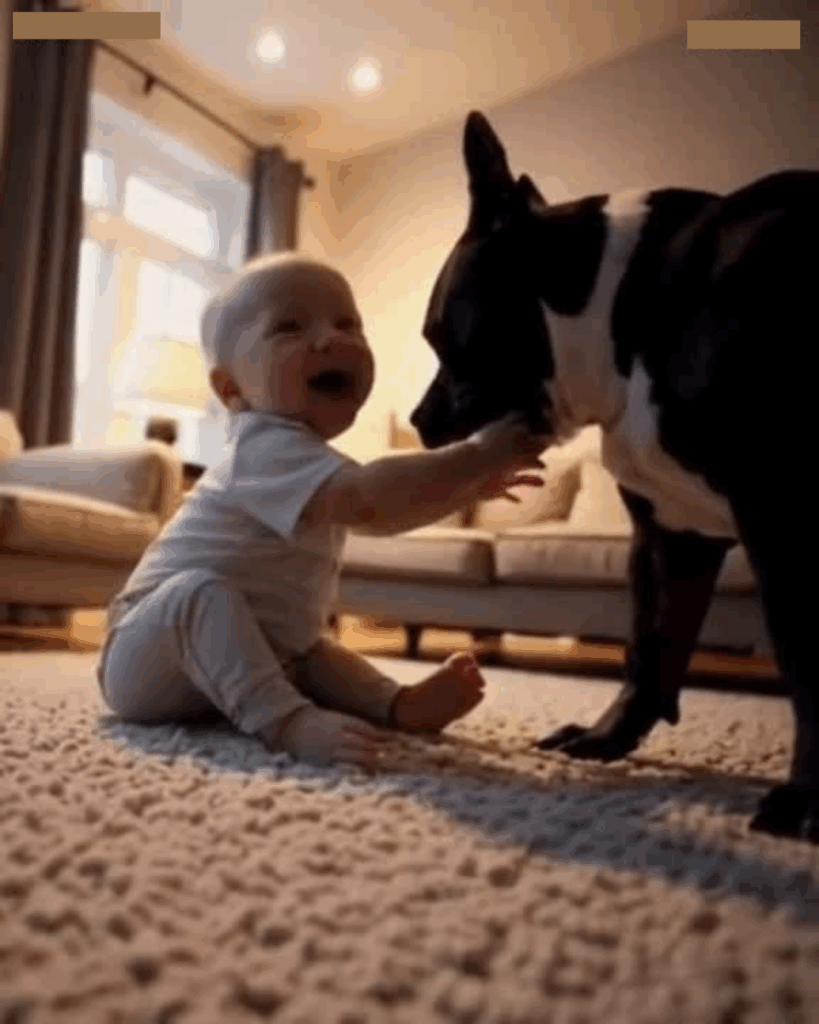It’s natural to be concerned about a large dog and an infant sharing the same space. While dogs are often called man’s best friend, the unpredictability of any animal — especially around a vulnerable baby — can make even the most loving grandparent anxious.
Can a dog suddenly attack?
The truth is, the vast majority of dogs do not attack without provocation or warning signs. Most well-trained and well-socialized dogs are gentle and protective of babies. However, accidents can happen. Dogs might get startled, feel territorial, or misinterpret a baby’s movements. Large dogs in particular can cause injury simply because of their size — a paw swipe or bump could knock over a toddler learning to walk.
What can parents do?
Parents who choose to keep a dog in the home with a baby should take precautions:
- Never leave the dog and baby alone unsupervised.
- Provide the dog with its own safe space where it can retreat if feeling overwhelmed.
- Watch for any signs of stress or aggression in the dog.
- Invest in obedience training if not already done.
Hygiene Concerns: Are Dogs a Health Risk to Infants?
Your concern about the dog’s drool and germs is valid — but how serious is the risk?
Can dog saliva spread disease?
Dog saliva can contain bacteria like Pasteurella, Capnocytophaga, and others that, in rare cases, can infect humans. However, healthy dogs that are properly vaccinated and dewormed present a low risk of spreading diseases to humans, including babies.
What about other microorganisms?
Dogs can carry dirt, pollen, parasites, and bacteria on their fur and paws. Babies, with their developing immune systems, could be more sensitive. That said, most children raised in homes with pets develop no major health problems, and early exposure to pet dander has even been linked in some studies to a reduced risk of allergies.
Tips for managing hygiene:
- Keep the dog clean — regular baths and grooming help reduce drool and dander.
- Wash baby’s hands and face frequently, especially after contact with the dog.
- Vacuum and sanitize floors and furniture regularly to minimize exposure to fur and germs.
Balancing Love for Pets and Baby Safety
It’s clear this grandparent’s concerns come from a place of love. But it’s important to remember that many families successfully and safely raise children alongside pets. Dogs can provide companionship, teach empathy, and even offer protection.
When should rehoming be considered?
If a dog displays repeated aggression, cannot adjust to the presence of a child, or if parents are unable or unwilling to implement safety measures, rehoming might be necessary. In these cases:
- Work with reputable rescue groups or breed-specific organizations that can find a suitable home for the dog.
- Avoid abandoning the dog at a shelter without trying other options first.
- Consult a professional dog trainer or animal behaviorist before making a final decision.
Humane Ways to Rehome a Dog
If the situation truly requires rehoming, consider these ethical options:
- Ask friends or extended family who might provide a loving home.
- Contact local rescue organizations or no-kill shelters.
- List the dog for adoption through reputable online pet adoption platforms.
- Work with your veterinarian, who may have connections to responsible adopters.
It’s vital that the dog’s well-being remains a priority, even during rehoming efforts.
A Conversation, Not a Conflict
Perhaps the best first step is to have an open, compassionate conversation with your son and daughter-in-law. Express your worries calmly, listen to their perspective, and consider solutions together. They may already have safety protocols in place that you’re unaware of.
Final Thoughts
While a grandparent’s protective instinct is admirable, it’s important to balance concerns with facts. Many babies thrive in homes with pets, provided that proper care, training, and supervision are in place. Before making decisions about removing the dog, consider:
- Consulting with a pediatrician about real health risks.
- Speaking to a dog trainer about behavior assessment.
- Exploring all humane rehoming options if necessary.
Ultimately, the goal is the same: keeping the child safe while respecting the bond that may exist between the family and their pet.


